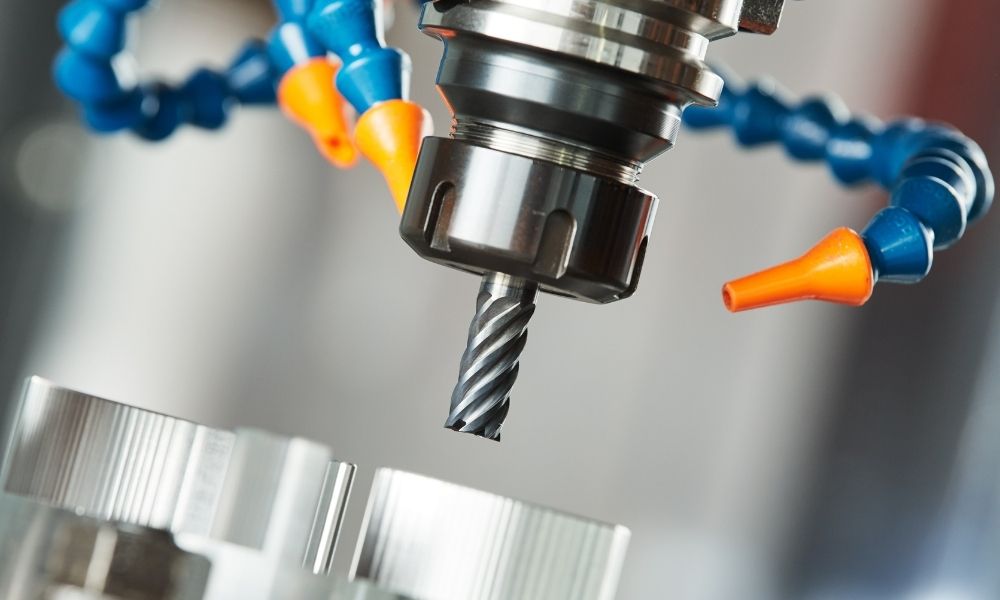CNC Cutting Tools: All You Need To Know

In manufacturing industries, CNC machines are widely used. They are high-precision, computer-controlled tools that generate accurate movements in repeated patterns. They were first introduced in the 40s, and since then, their use has only increased.
We use CNC machines for various operations, which are widely applied in all manufacturing industries. Even though many compare CNC machines to 3D printers, there are some major differences between them. CNC machines offer better precision, advanced speed and cost more money.
There are various types of cutting tools. We will go through them and try to explain their basic features because each one of them has a different purpose.
Carbon Steel Tool
Carbon Steel Tool is pretty cheap and designed for operations that require low speed. Their composition contains 0.6-1.5% of carbon, a bit of silicone, and manganese. Usually, forming tools, twit drills, and milling cutters are made of them.
HSS or high-speed steel
These cutting tools are made of high-carbon steel while containing a fair amount of molybdenum, tungsten, and chromium. This combination of materials ensures hardness, toughness, and better wear resistance, which can significantly contribute to your manufacturing business.
HSS is able to remove a lot of material in one go. However, you must apply a specific surface treatment to improve their property.
Ceramics
Cutting tools that are composed of ceramics are resistant to corrosion and are ten times faster than steel. In most cases, ceramic tools are made of silicon nitride and aluminum oxide. If you have a project requiring a premium finish, we suggest using ceramics.
Cemented Carbide
Cemented carbide is made for operations that require high speed. These tools are incredibly hard and highly resistant to temperature. Usually, materials like tungsten, titanium, and tantalum are used to construct cemented carbide.
Operations that demand a premium quality surface finish also use them.
End mills
End mills are rotational cutting tools that people use to remove materials. While similar to drills, the end mills offer a diverse set of operations. Unlike drills, end mills can cut in different directions.
Remember that some mills, because of their design, can’t cut materials axially. There are several types of end mills:
- Ball nose mill: perfect for 3D contour work, it has a rounded nose that makes precise curved surfaces.
- V-bit: these tools make V-shaped marks, and they can be 90 or 60 degrees, depending on the angle and material. If your project requires excellent sharp edges or you need to engrave signs, the V-bit tool is perfect for that purpose.
- Straight flute end mills: they provide top-quality edges and are mostly used for a general purpose.
- Down-cut and up-cut end mills: these tools produce a smooth surface finish.
Twist drills
Twist drills are rotary tools that can greatly improve your CNC service. They contain two cutting edges and two flutes. Even though they have a unique design, it quickly reaches the point of cutting action. Companies and businesses mostly use twist drills to lower production costs and execute operations with a top-notch finish.
Fly cutters
They are single-point cutters whose general purpose is to offer a great surface finish. Fly cutters go across the surface clockwise, making the material surface flat and smooth. These cutting tools are ideal for all operations where you must produce an outstanding fine finish.
Why should you use the right cutting tools?
Well, they play a crucial role in how you perform your business. While some of these products might be pricey, you can’t neglect their importance because, in many instances, the quality of your project will depend on cutting tools.
The industrial world has become highly competitive, and to succeed, you need to use high-quality materials and tools and offer top-notch service. Many consider that cutting tools are a crucial part of any professional project, and we must agree to some extent. They will either make or break your project.
If you have the right cutting tools, you can accomplish efficiency, accuracy, high precision, and great productivity in machining operations.
Conclusion
In this article, we offer you the most important cutting tools that will not only improve your manufacturing business but save you a lot of time. Choose the right tools and become a leader in this highly competitive industry.





